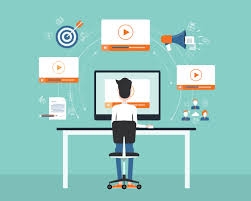In 2017 “Data” is the Key Word in Event Marketing

By Elizabeth Johnson
“Get the right message, in front of the right people, at the right time.” It’s a common phrase, practically a mantra for today’s marketer. And the key to achieving that goal is data.
Event-producing organizations cover the spectrum of sophistication when it comes to data driven marketing. Some are at the beginning of implementing a robust data collection system and others are using data to plan future content, develop marketing strategies and find new audiences.
“Conferences and tradeshows live or die by the quality of their data,” said Kevin Miller, president and chief strategist at Frost Miller. “Old or disorganized data about attendees, exhibitors and prospects yields slow or no growth. Good data—both accurate existing data and creative sources of new data—spell growth and success.”
Frost Miller uses data to identify new audiences that share similar interests in order to grow meetings and trade show.
“Reliable data enables you find prospects who share similar characteristics with your existing or past participants – based on a wide variety of demographic characteristics,” Miller said.
He added, “Using your data and predictive analytics techniques, we look at purchasing history to compile lists of people who may be interested in buying similar products or services – in this case, registration or exhibit space at a tradeshow or conference.”
In addition to collecting standard demographic information, events can benefit from collecting data around attendee activity using technology such as Radio-frequency identification (RFID).
“RFID is a great way to collect data around access points and how long attendees may stay in a seminar or an area which can be very helpful for planning the future around content and interest of attendees,” said Sarah Sebastian, creative director at Rose Gold Collective.
She added, “RFID can also be used to vote. If a meeting is looking for some data around launching something new, using a RFID bracelet is a great way to engage attendees and gather voting by scanning your band in front of the item you are placing your vote on.”
RIFD is not the only technology that can generate the information meeting planners and show organizers seek.
“Another interesting technology that could be very useful are sensor, heat activating tiles that are easily put under carpet or wood flooring,” Sebastian added. “Imagine, at a trade show booth you can track how long attendees engage with your booth, the heat map of how excited attendees are about certain elements within your booth.”
Once a data collection program is underway, understanding it can alert meeting planners to potential problems and allow them to pivot on marketing strategy before it’s too late.
“I use data to forecast trends of repeat events,” explained Cindy Lo, DMCP, president and event strategist, Red Velvet Events, a Global DMC Partner.
She added, “For example, if I start to notice that at the same time frame the number of attendees are registering less than the past few years, I dig deeper to figure out if we are doing something different with our marketing or is the audience losing interest in the event?”
Myke Nahorniak, co-founder and CEO of Localist also uses data for forecasting and planning future events.
“We identify where people who attended an event came from and use it inform where our customers should throw an event and where they should advertise for the event,” Nahorniak explained.
In addition, Localist uses data to think long term.
“We can tell customers which of their events were the most interesting according to the EventScore (trending algorithm) over a date range. This does not just measure the "most popular" event; the algorithm surfaces more obscure but “sticky" events,” shared Nahorniak.
He added, “By looking at analytics, event planners can see what's resonating the most, long-term, regardless of how many people show up in the short term, and take that into consideration and plan similar events for maximum impact.”
Data also can monitor attendees’ social activity. Localist tells customers which events are being shared most (which might be completely different than which are trending).
“This leads to interesting insights. For one customer, physically printing the event details turned out to be more popular than sharing events on Twitter. Looking at these analytics provides insight into where your audience actually is and how they're actually acting in real life,” Nahorniak said.
While the uses for data in event planning and marketing are virtually endless, the key is getting started by knowing what data is needed, what data is already available and how to get the missing pieces of data that will paint the picture of an event.


Add new comment